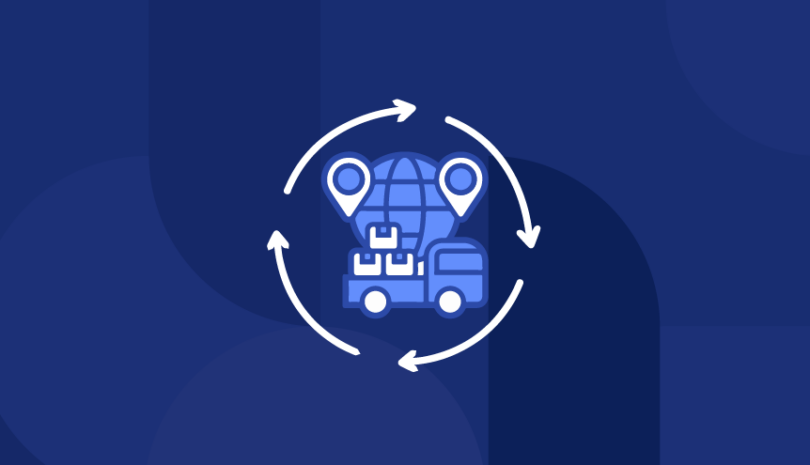Today’s businesses have to navigate a complex digital environment, which is growing more extensive and layered all the time. There’s no such thing as operating in isolation; every organization is connected to hundreds and thousands of others through globalized supply chains, cloud infrastructure, and SaaS digital services provision.
As a result, your attack surface is larger than ever, and vulnerable to attack from almost any direction. Protecting it requires a new approach to risk management in the form of External Attack Surface Management (EASM). EASM maps and manages potential weaknesses in all your external-facing assets, delivering early alerts about vulnerabilities that could be exploited to attack your company.
In this article, we’ll discuss EASM, how it works, and the benefits it brings, to help you be proactive in identifying and securing your attack surface against external-facing vulnerabilities.
What is External Attack Surface Management (EASM)?
EASM serves as a kind of border control force for your digital presence. It’s a strategy based on identifying all the assets that connect your business with the outside world, and then constantly monitoring them for vulnerabilities that might offer an entry point for malicious actors.
EASM requires specialized methodologies and tools to continuously assess your attack surface and deliver early warnings about cybersecurity issues. This way, you can deal with them before attackers use them to breach your defenses.
Your external attack surface is made up of a number of different elements, including web servers, cloud services, domains, websites, third-party vendors, SaaS tools, and other public-facing infrastructure. Effective EASM involves surveying them all for vulnerabilities such as outdated software, open ports, misconfigurations, or weak encryption protocols, which could enable unauthorized access.
Internal vs. External Attack Surfaces
Before moving on to a more detailed discussion about EASM, let’s explore what an external attack surface means. Your external attack surface comprises all the publicly accessible points that could be targeted from outside your organization. They include:
- Public-facing websites
- Cloud services
- External APIs
- Third-party vendors
- Shadow IT
It contrasts with your internal attack surface, which is made up of vulnerabilities and entry points within your internal network. It includes:
- Employee devices
- Internal servers
- Internal applications
Why External Attack Surfaces are a Primary Target
Because it’s outwards-facing, your external attack surface offers the most accessible and visible points of entry. Attackers look for weaknesses like open ports, which provide direct access to network services; exposed APIs which they can manipulate to extract data or execute commands; and unpatched software with known vulnerabilities.
Criminals know that if they exploit these weaknesses, they can bypass perimeter defenses. Once they gain a foothold within the network, they can carry out data breaches, ransomware attacks, or other malicious activities.
The rise of remote work and cloud adoption have made EASM more vital. Remote work requires enabling employees to access corporate resources from outside the traditional network perimeter, and cloud services mean that more applications and data are accessible over the internet, often through interconnected cloud environments. As a result, the external attack surface is larger, more complex, and more opaque, making it harder to survey and control.
How External Attack Surface Management Solutions Work
In such a challenging environment, EASM solutions are a must-have. You need visibility into your entire digital footprint, because hidden assets pose risks to your security. EASM solutions reveal shadow IT, forgotten vendors, and misconfigured assets, which might otherwise go overlooked.
EASM solutions are tech tools that work by continuously monitoring, discovering, and mapping your digital ecosystem. They create an inventory of all your digital assets, including vendors and third parties, and then regularly scan them for open ports, exposed APIs, unpatched software, and other potential vulnerabilities that your security team didn’t know about.
Once they’ve identified external-facing assets, a good EASM solution will integrate threat intelligence to assess and contextualize the risks, monitor them, and apply remediation. If it detects a change in risk posture or a new vulnerability, it generates an alert which is prioritized according to the severity of the risk, and will suggest ways to mitigate the issue.
The Benefits of Implementing External Attack Surface Management Solutions
Implementing EASM solutions for your organization can bring a whole host of benefits. These include:
- Comprehensive risk awareness that reveals the full range of potential vulnerabilities
- Proactive defense that nullifies or mitigates threats before they escalate into attacks
- Improved incident response with faster detection and remediation
- Better regulatory compliance with various standards and requirements
Here’s a deeper exploration of these advantages.
Comprehensive Risk Awareness
First and foremost, EASM solutions open up risk awareness to be far more comprehensive. They provide you with a complete and continuously updated view of all your external vulnerabilities, including shadow IT and forgotten vendors.
With better visibility into your full external attack surface, you can better assess the risks associated with each asset. Because EASM tools integrate threat intelligence, they also enable you to prioritize remediation efforts according to the severity and potential impact of each risk. This way, you optimize resource allocation, prevent data breaches, and improve organizational resilience.
Proactive Defense
The continuous monitoring that EASM solutions provide makes for a more proactive approach to cybersecurity. Constant surveillance across all your external digital assets means that you know about weaknesses like open ports, exposed APIs, and unpatched software in real time, and can address them immediately.
The early detection of new vulnerabilities and changes in your attack surface allows security teams to remediate issues before they can be leveraged in an attack, which helps minimize risk and prevent breaches. Overall, the result is a stronger and more resilient security posture.
Improved Incident Response
When it comes to cybersecurity, time is of the essence. The sooner you detect a security issue, the faster you can begin to deal with it. The real-time monitoring you get from EASM solutions allows you to identify emerging threats while they are still nascent, and respond to them before they escalate.
When you address threats while they are still relatively minor, it requires less time and resources to mitigate and remove them, which leaves security teams free to deal with more complex issues. Early response also means that there’s little to no time for malicious actors to exploit vulnerabilities and cause a serious incident.
Regulatory Compliance
Alongside proactive defense, risk awareness, and faster incident response, EASM solutions also boost your regulatory compliance. Regulations like GDPR, CCPA, and NIST require that all your external digital assets are continuously monitored and secured.
A number of regulatory standards also include stringent data protection measures, obligating you to identify and mitigate vulnerabilities that could expose sensitive information. EASM tools ensure that you have an up-to-date inventory of all internet-facing assets, close security gaps, and maintain a comprehensive audit trail that helps you demonstrate compliance.
External Attack Surface Management Solutions vs. Traditional Vulnerability Management
Until recently, cybersecurity revolved around traditional vulnerability management strategies and penetration testing. These focus on identifying and remediating vulnerabilities in your internal network, like employee devices, servers, and applications. In contrast, EASM looks at assets that are publicly accessible as part of your external attack surface. Pen testing is also a periodic activity, while EASM involves continuous monitoring.
In today’s evolving and complex threat landscape, EASM is vital. The ongoing monitoring and proactive approach ensures that you identify risks before they can be exploited, making your defenses more robust and reliable.
But don’t throw out traditional vulnerability management. The combination of internal and external strategies produces a holistic cybersecurity methodology that protects you against both internal and external attacks. EASM enhances threat visibility and risk awareness, while traditional vulnerability management ensures that internal systems are secure. This integrated approach helps organizations stay resilient in a dynamic threat environment, effectively reducing the overall risk of successful cyberattacks.
Challenges in Adopting External Attack Surface Management Solutions
Although the benefits of EASM are clear and undeniable, there can still be challenges to overcome before implementing the solutions successfully. Setting up and maintaining EASM solutions can require a significant cost investment, especially for small or medium enterprises. It can also be complex to integrate new tools into your existing security frameworks and align them with your current processes. It doesn’t help that there’s a shortage of skilled cybersecurity professionals, which might make it difficult to maximize the potential of EASM tools.
However, you can overcome all these challenges. Understanding your external attack surface and specific security needs enables you to choose the right EASM solution and avoid wasting money on tools that aren’t a good fit. Managed services and vendor partnerships bring you the expertise and resources you need for effective implementation, while training programs can ensure that your employees operate EASM tools effectively.
The Future of External Attack Surface Management Solutions
EASM solutions are already transforming cybersecurity and powering an integrated strategy as part of the ongoing digital transformation. As EASM solutions continue to evolve and integrate advances in artificial intelligence (AI), machine learning (ML), and threat intelligence, they’ll deliver even more powerful organizational defense.
AI and ML can automate external asset discovery and reveal vulnerabilities earlier. Predictive analytics will identify potential attack vectors based on historical threat patterns to provide more accurate and timely alerts. And integrating threat intelligence feeds will allow EASM tools to contextualize vulnerabilities, helping you prioritize remediation efforts more effectively.
External attack surfaces are expanding rapidly, thanks to remote work and cloud adoption, requiring continuous visibility into and control over digital assets. By aligning EASM with broader security frameworks, you can build a holistic security posture that proactively adapts to the ever-changing threat landscape.
External Attack Surface Management Solutions
External attack surfaces are exploding both in terms of complexity and size. Organizations need new strategies and methodologies in order to keep up with the fast-growing threats from malicious actors seeking unprotected backdoors into your networks. EASM solutions bring advanced visibility into unseen weaknesses, together with heightened awareness of external-facing risks and better incident response.
Integrating EASM solutions with your existing cybersecurity tools and processes empowers security teams to deliver proactive defense against the risks that menace your organization. As these tools continue to evolve to become more powerful and effective, they’ll enable you to navigate the complexities of modern cybersecurity, and maintain resilience in a digitally transformed environment.
Ready to evaluate your external attack surface and up the ante against malicious actors? Contact Panorays to learn more.
External Attack Surface FAQs
-
Your external attack surface is all your digital assets that face the outside world. This includes websites, servers, cloud services, third-party vendors, and SaaS tools, among others. It comprises any access point that someone outside your organization could target.
-
Basically, your internal attack surface is made up of vulnerabilities that lie inside your networks, like employee devices, internal servers, and internal apps. Your external attack surface encompasses outwards-facing access points like external APIs, shadow IT, and public-facing websites. The internal attack surface is generally protected by firewalls and other security measures, and the external attack surface is protected by EASM and monitoring tools.
-
External attack surface management brings a whole range of benefits. These include comprehensive risk awareness, proactive defense to prevent threats before they evolve into full scale incidents, improved incident response, and stronger compliance with regulatory standards and requirements.
-
External Attack Surface Management (EASM) tools are cybersecurity solutions designed to continuously discover, monitor, and manage your external-facing digital assets. They identify vulnerabilities like open ports, misconfigured services, and unpatched software, and help you prioritize remediation, improve your security posture, and proactively defend against external threats.



